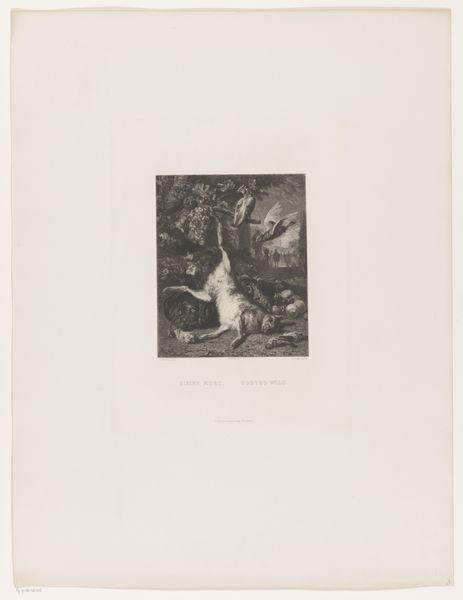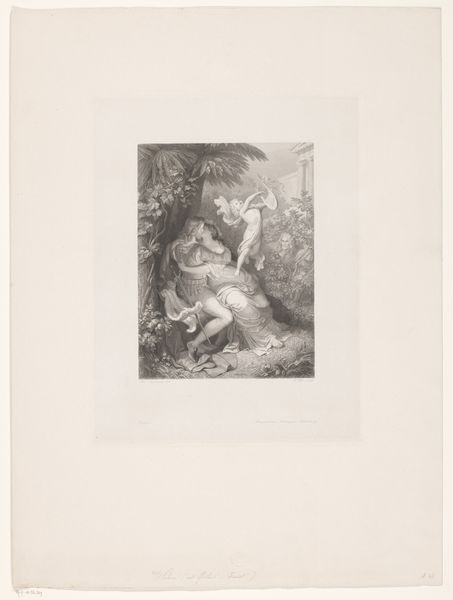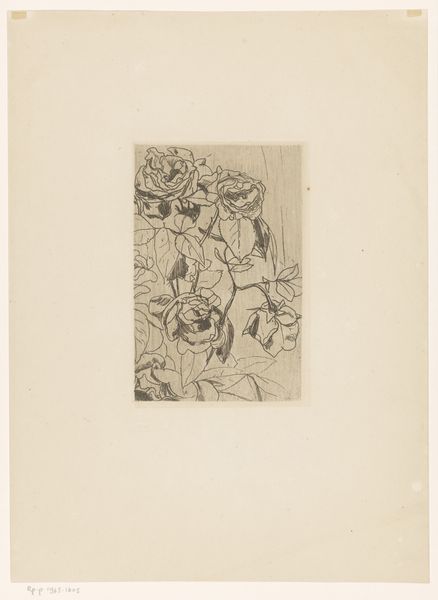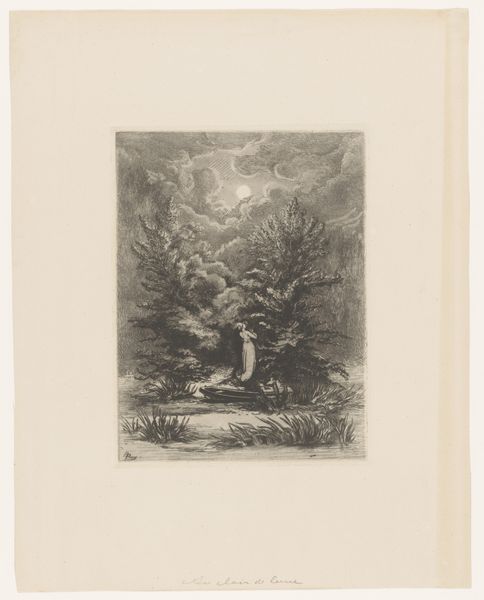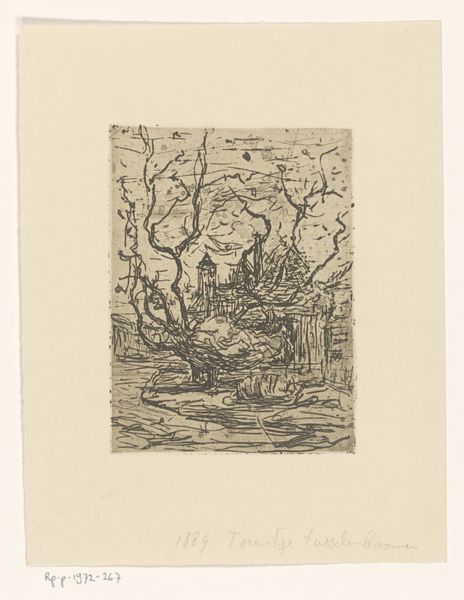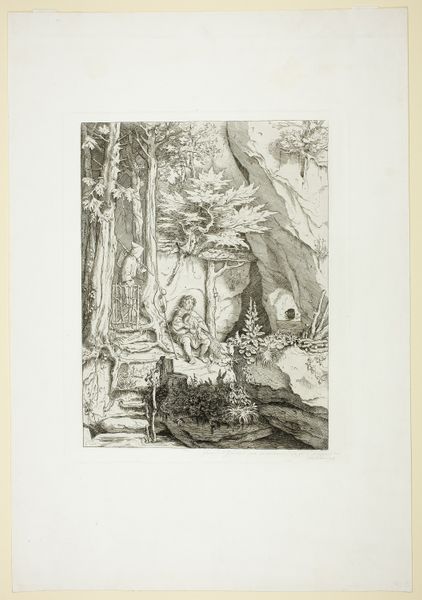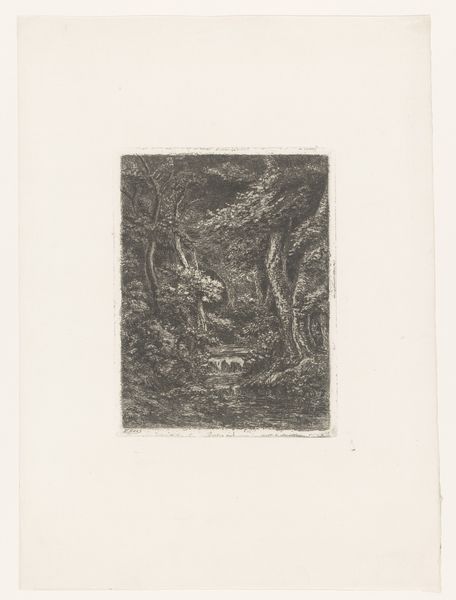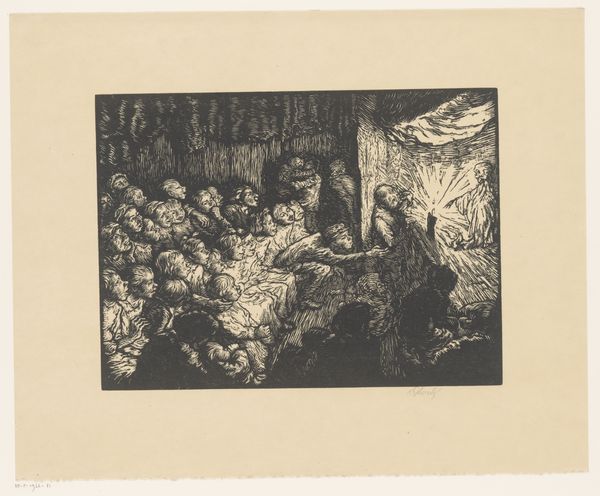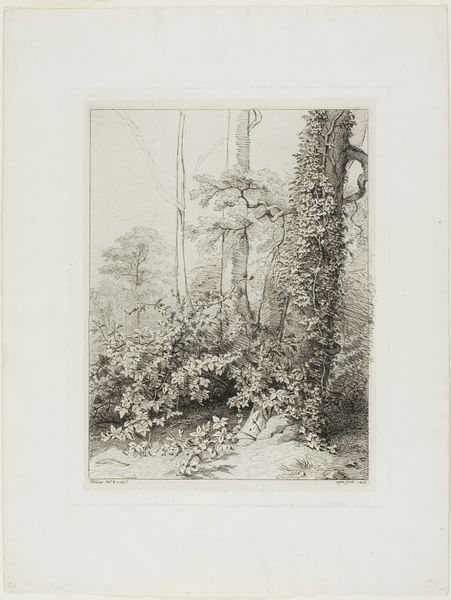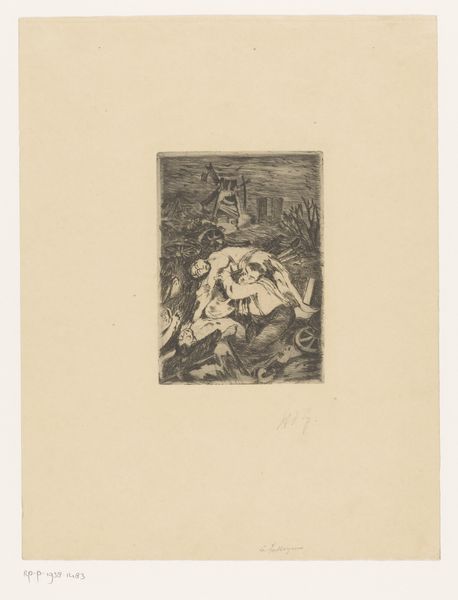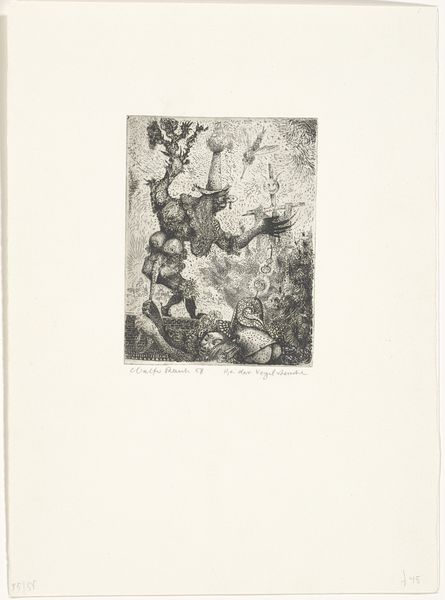
#
photo of handprinted image
#
toned paper
#
light pencil work
#
pale palette
#
pale colours
#
ink paper printed
#
light coloured
#
old engraving style
#
bird
#
white palette
#
remaining negative space
Dimensions: height 293 mm, width 225 mm, height 312 mm, width 240 mm
Copyright: Rijks Museum: Open Domain
Curator: Theo van Hoytema's "Dode Vogel," or "Dead Bird," created around 1904 and now held at the Rijksmuseum, uses ink on paper to depict its poignant subject. What strikes you about this work? Editor: It has a ghostly presence. The pallid palette and intricate linework create an almost dreamlike atmosphere, or perhaps something out of a half-remembered fairytale. There’s an eerie beauty in its somber tones. Curator: Hoytema, known for his graphic work, often imbued his images of nature with a deeper symbolic resonance. Here, the fallen bird likely functions as a vanitas symbol, reminding us of the transient nature of life. The surrounding flora adds to this contemplation of mortality. Editor: Absolutely, the arrangement itself emphasizes this reading. The delicate balance of light and dark creates visual harmony, but simultaneously underscores the delicate boundary between life and death. The texture almost vibrates! Curator: He returned repeatedly to bird motifs; they held particular cultural meaning for him. Birds often symbolize the soul, freedom, or even messages from the divine, but here, its lifeless state prompts reflection on lost potential. In a deeper cultural context, birds also played a key role as heralds of seasonal changes or impending dangers, their absence felt keenly. Editor: Yes, that symbolism adds another layer. If we analyze the composition itself, the stark contrast of the lifeless bird against the flowering branches speaks volumes about nature's cycles. It’s a powerful statement about nature's beauty, yet an equally potent acknowledgment of life's fragility. Curator: Precisely. Hoytema invites us to confront our own mortality through this intimate portrayal, transforming a simple image into a poignant meditation on existence. The entire composition acts as a sort of memento mori, reminding us of the ever-present shadow of death, even in the midst of life. Editor: Considering this work, I'm newly attuned to the delicate details in art—not just what is depicted, but how its artistic execution subtly but surely affects us.
Comments
No comments
Be the first to comment and join the conversation on the ultimate creative platform.
